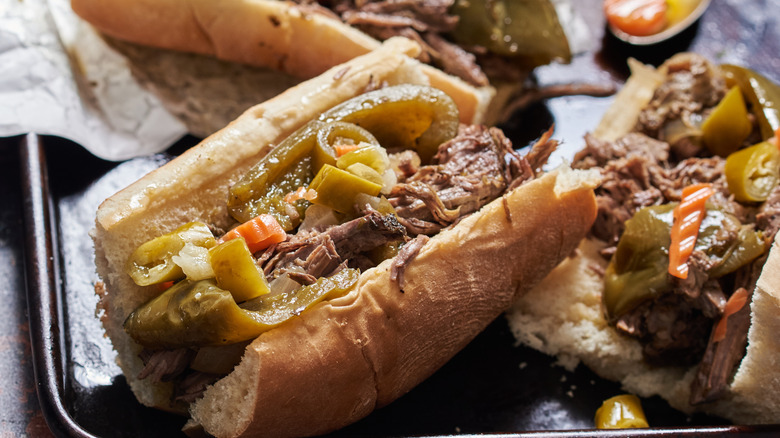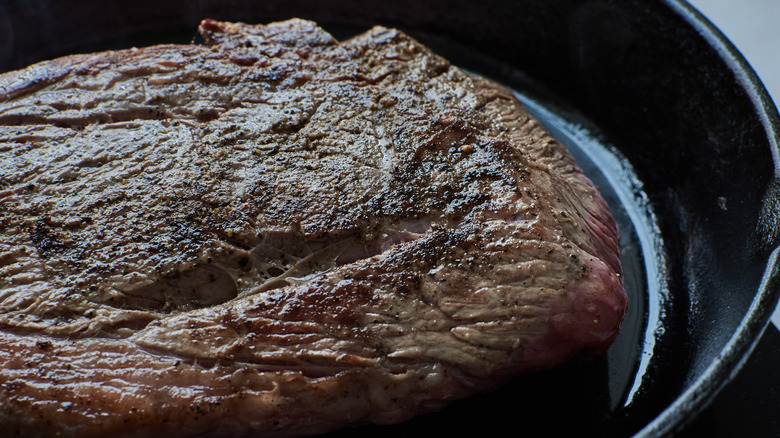The Step You Should Never Skip For The Most Flavorful Italian Beef Sandwiches
The Italian beef sandwich has been a staple Chicago food since its origin in the early 1900s from Italian immigrants in the city. The original Italian beef from this time would likely have been chewy, tough cuts of beef sliced thin and cooked in a spiced broth till tender, and then piled onto bread. Not too much has changed about Italian beef since its debut, and with a popular media presence in the streaming show "The Bear," authentic Italian beef has become a must-try sandwich for people everywhere. If you're unable to get to Chicago to try the sandwich there, you can attempt to make your own at home. Tasting Table recipe developer Michelle McGlinn's Slow-Cooker Italian Beef Sandwiches are an easy way to experience Italian beef from the comfort of your home.
To get the most flavorful Italian beef sandwich McGlinn instructs to brown the beef before it touches the slow cooker. "There is a lot of flavor that comes with browning beef before stewing it," explains McGlinn. This act of browning meat refers to partially cooking it to get rid of any excess fat and also to creating a flavorful crust around the meat. This technique triggers the Maillard reaction, a food science response that happens when your meat reacts with a hot pan. Sugars and amino acids from the protein being heated begin to interact with each other and draw out moisture. The result is a fragrant, flavorful crust.
How to properly brown your meat
Michelle McGlinn explains that when searing the meat for her Italian beef recipe, the "trick with this step is searing only the outside of the beef, leaving the inside as untouched as possible to avoid overcooking the meat and drying it out." This requires preheating your cooking oil beforehand to ensure your pan is hot enough to create that crust without worrying about cooking the interior of the meat. You want most of the meat to be cooked in the slow cooker so it can take on the spicy flavors of the broth and become nice and tender.
To ensure you brown your meat correctly, McGlinn calls for a cast-iron skillet. Cast iron is excellent for retaining heat and evenly distributing it. She shares that if you hover your hand above the pan and oil you should feel the heat. Another way to tell if your oil is hot enough is to take a wooden spoon and place the handle in the oil. If you see small bubbles form around it this is a good indicator that the pan is hot and ready to go. If you gently tilt your pan and see the oil moving in a shimmering way, like small waves, this is also a sign that your oil is properly heated. Heating the oil is important to ensure not only that your meat cooks correctly, but that it won't stick to the pan either.

